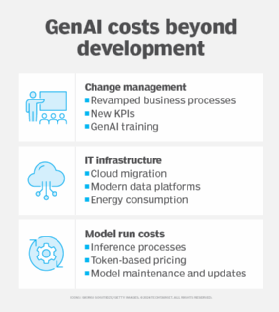
Getty Images/iStockphoto
Zendesk adds a twist to AI outcomes-based CX pricing
Zendesk's dynamic pricing adds flexibility to subscriptions and outcomes-based pricing.
On Monday, Zendesk users got yet another pricing option for the popular customer and employee experience suite, called dynamic pricing.
Zendesk's dynamic pricing is different from its outcomes-based pricing, which is based on the number of customer or employee service query resolutions. Dynamic pricing lets customers reallocate their Zendesk financial commitment to AI agents instead of rewriting their seat-based Zendesk contracts.
It's not an either-or situation where a customer has to pick either dynamic or outcomes-based pricing, a Zendesk spokesperson said. The point of the complementary models, she said, is to give customers flexibility to deploy and test AI agents within their business workstreams, and to understand the mix of humans and bots that will work best moving forward.
AI pricing has posed challenges to CX vendors, as most -- with the exception of cloud giants such as Microsoft, AWS and Google -- do not have their own generative AI large language models. They must figure out how to pass through LLM costs to customers while giving them the ability to scale up and down as, for example, retailers must do during the weeks around U.S. Black Friday sales.
Salesforce has a contact center pricing model that somewhat resembles Zendesk's, pricing Agentforce at $2 per conversation.
Analysts such as Constellation Research's Liz Miller point out that AI bot pricing for customer service remains a black box, where customers and vendors don't really know how much they'll ultimately pay -- especially in comparison to human agents.
Zendesk customers discuss AI, outcomes pricing
At Zendesk's AI Summit in New York City last month, customers learned about the company's outcomes-based pricing. Some greeted the idea with enthusiasm; others were more tempered in their response. For example, one customer, who, like many, is in the early stages of a customer service AI rollout, said he didn't care what the pricing model was unless it went over the line item number in his company's annual IT budget.

"Whatever way they cut it, or put in a mechanism to price it, I'm fine with as long as the price is equal to the benefits of receiving the service," said the Zendesk user, who is a director of business development and customer service for a medium-sized, consumer-facing business. "I'm indifferent, because you could charge me a lot on a flat fee, or you could charge me a lot on a [help desk] ticket basis. If I don't get my value, the same results will happen -- I won't use it anymore."
Legacy interactive voice response (IVR) phone systems are one example of a pain point that AI shows promise for solving. Zendesk CTO Adrian McDermott is convinced that one vendor with which Zendesk has partnered, PolyAI, will help customer service organizations replace traditional rules-based IVRs with generative AI-powered voice assistants. The AI assistants are expected to fix the problem within a year.
"It's more about 'Tell me what I can do for you today,' intent extraction, and then a voice bot takes you through the interaction with a lot of data-dipping on the back end," McDermott said.
Don Fluckinger is a senior news writer for TechTarget Editorial. He covers customer experience, digital experience management and end-user computing. Got a tip? Email him.






